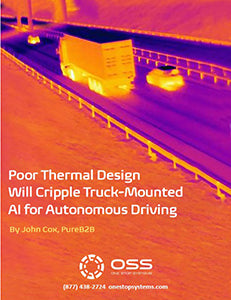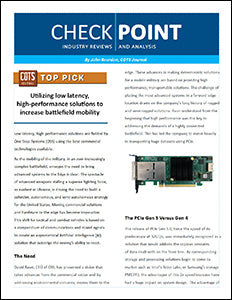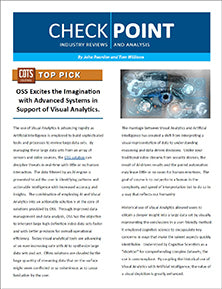

Low latency, high-performance solutions are fielded by One Stop Systems (OSS) using the best commercial technologies available. As the mobility of the military, in an ever-increasingly complex battlefield, emerges the need to bring advanced systems to the Edge is clear. The spectacle of advanced weapons stalling a superior fighting force, as evident in Ukraine, is driving the need to build a cohesive, autonomous, and semi-autonomous strategy for the United States. Moving commercial solutions and hardware to the edge has become imperative. This shift for tactical and combat vehicles is based on a compendium of communications and mixed signals to create an asymmetrical Artificial Intelligence (AI) solution that outstrips the enemy's ability to react.

When most of us think about moving data, we don’t think of an amount of data that requires a semi-truck to move it. But as applications at the edge are generating copious amounts of data, the calculus for this bottleneck has led One Stop Systems to build a family of storage solutions to address these needs with an eye for forward, harsh environments.

Bridging the gap between sensors and high-performance compute power is a growing challenge, especially in systems where quick, complex decisions are vital.
The concept of “the edge” in embedded systems has taken on new urgency in the federal space. The need to address the burgeoning amount of high-speed, vital data with powerful AI processing for immediate complex decision and reaction could be likened to the idea of stuffing a data center under the seat of a helicopter (if only!). “The edge” can be defined as “where it’s happening” and in government systems, that’s the field. Traditionally, the problem of linking high-speed sensors and actuators with super-powerful AI resources has been addressed with high-speed data communications. But that has serious limitations in terms of field operations where package size, speed, mobility, and reliability are paramount.

Program managers face hard tradeoffs bringing artificial intelligence to in-the-field use cases. A new AI server from One Stop Systems shows what capabilities they should look for in portable, rugged AI deployments.
Nearly all the current generation of AI compute platforms suffer from failing to integrate and optimize high-performance computing with compact, rugged form factors. The result is that program managers too often end up trading performance for rugged design, or vice versa. One Stop Systems (OSS) has created a new supercomputer-class server that eliminates these trade-offs.
